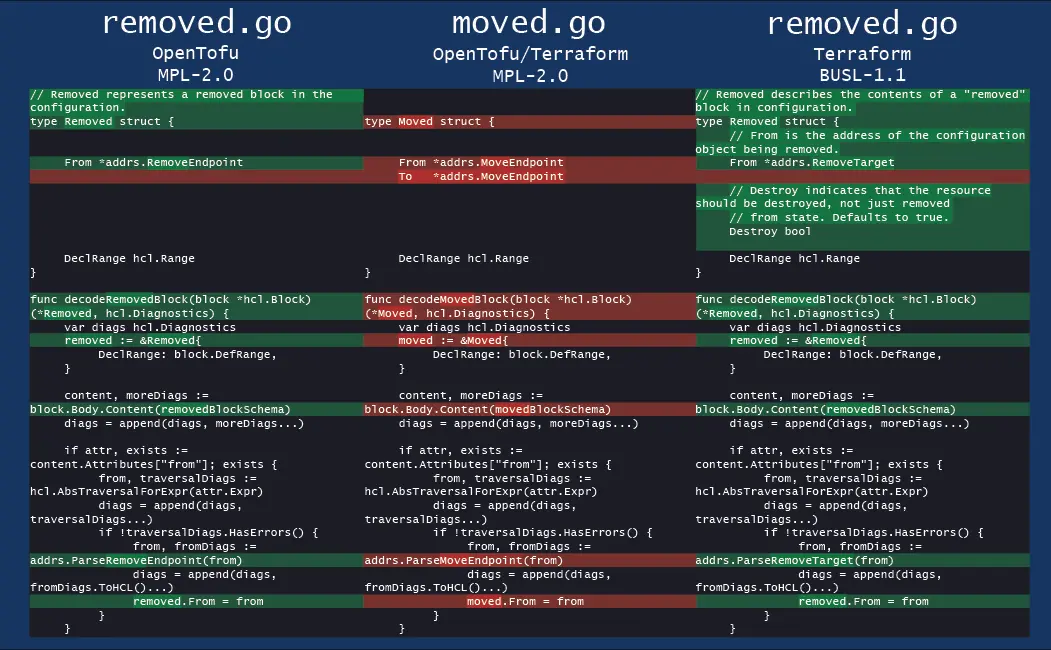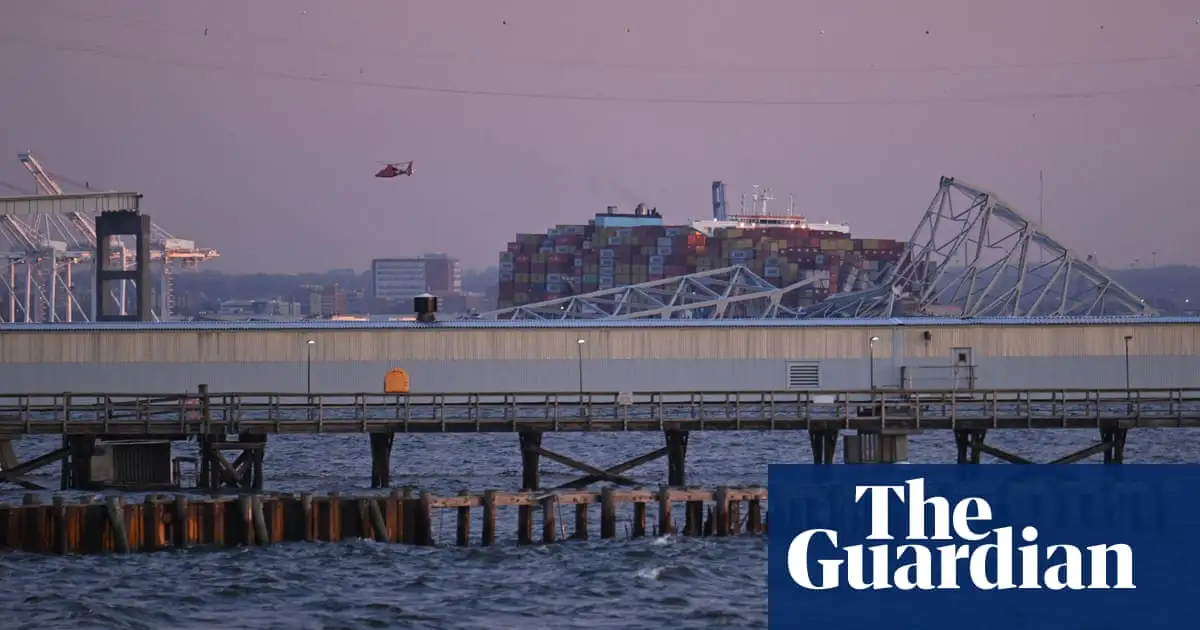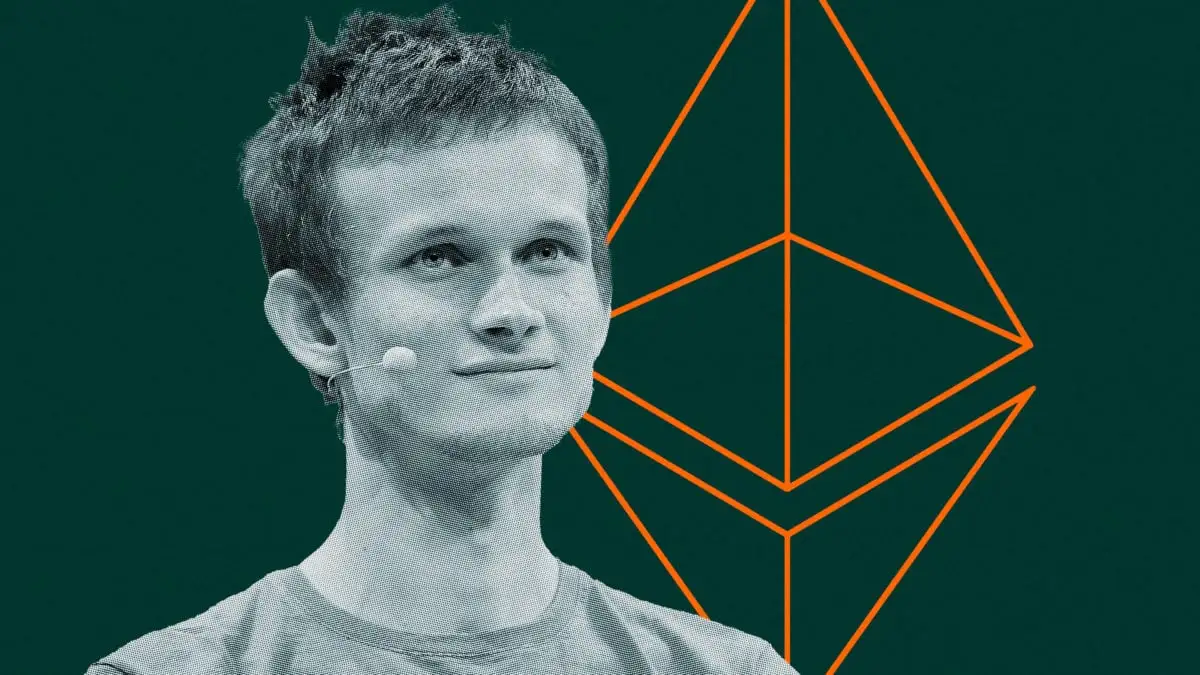Also on Mastodon: @pedroapero@mastodon.top
Want to send me a tip? XMR:89oiUKyACFZ655sTikh42RF8wpd46EQDmbTQUQiHHRWFEatjp5xxj4tZBhMMfjC4X45qvq4EdEGXkBsdxT1kP9xyVia8mPD
Don't know who exactly you are interested in, here are some random known accounts:
- the EU commission (other EU institutions as well): https://ec.social-network.europa.eu/@EUCommission
- gog games: https://mastodon.world/@goggames
- The New Stack: https://hachyderm.io/@TheNewStack
- Mozilla: https://mozilla.social/@mozilla
- Rust foundation: https://social.rust-lang.org/@rust
- Free Software Foundation: https://hostux.social/@fsf
- Electronic Frontier Foundation: https://mastodon.social/@eff
- Greta Thunberg: https://mastodon.nu/@gretathunberg
Regarding individuals, I'm following a bunch of software developpers. I'm mostly interested in topics, hence I prefer Lemmy by far.
DHT is autonomous and does not require a tracker. Usually it is only used as a fallback as a regular tracker is quicker. It's p2p, and is split accross people hosting it.
I am doing 5-10$ rounds of donations (4-10 projects each generally) to my favourite projects too on a regular basis. I favor XMR transactions as is it largely accepted those days and fees are appropriate for such low amounts.
A phone server that is disconnected from cellular is already broken anyways.
Is she even on Bluesky?
Palworld is another kind of game playable multiplayer on xbox/pc.
"ex official said: this might happen and that might mean" how is this relevant news?
this new is 3 years old from what I can see
En même temps, avec ce qui se passe aux USA il y a de quoi se poser des questions (en parlant juste du vote populaire).
Sans un système éducatif décent, sans maitrise de l'information, et sans restrictions sur le financement des campagnes, tout part en vrille.
Je ne suis pas de cet avis, mais c'est certainement un système fragile et souvent injuste.
Fun game for multiplayer. It's similar to Overcooked.
UK Nuclear Site's Clean-Up Costs Rise To £136 Billion
National Audit Office questions value for money as predicted bill for decommissioning increases by £21bn

The cost of cleaning up the U.K.'s largest nuclear site, "is expected to spiral to £136 billion" (about $176 billion), according to the Guardian, creating tension with the country's public-spending watchdog.
Projects to fix the state-owned buildings with hazardous and radioactive material "are running years late and over budget," the Guardian notes, with the National Audit Office suggesting spending at the Sellafield site has risen to more than £2.7 billion a year ($3.49 billion).
> Europe's most hazardous industrial site has previously been described by a former UK secretary of state as a "bottomless pit of hell, money and despair". The Guardian's Nuclear Leaks investigation in late 2023 revealed a string of cybersecurity problems at the site, as well as issues with its safety and workplace culture. The National Audit Office found that Sellafield was making slower-than-hoped progress on making the site safe and that three of its most hazardous storage sites pose an "intolerable risk".
> The site is a sprawling collection of buildings, many never designed to hold nuclear waste long-term, now in various states of disrepair. It stores and treats decades of nuclear waste from atomic power generation and weapons programmes, has taken waste from countries including Italy and Sweden, and is the world's largest store of plutonium.
> Sellafield is forecast to cost £136bn to decommission, which is £21.4bn or 18.8% higher than was forecast in 2019. Its buildings are expected to be finally torn down by 2125 and its nuclear waste buried deep underground at an undecided English location. The underground project's completion date has been delayed from 2040 to the 2050s at the earliest, meaning Sellafield will need to build more stores and manage waste for longer. Each decade of delay costs Sellafield between £500m and £760m, the National Audit Office said.
> Meanwhile, the government hopes to ramp up nuclear power generation, which will create more waste.
"Plans to clean up three of its worst ponds — which contain hazardous nuclear sludge that must be painstakingly removed — are running six to 13 years later than forecast when the National Audit Office last drew up a report, in 2018... "
"One pond, the Magnox swarf storage silo, is leaking 2,100 litres of contaminated water each day, the NAO found. The pond was due to be emptied by 2046 but this has slipped to 2059."
Singapore Approves 2,600-Mile Undersea Cable to Import Solar Energy from Australia
The world's largest renewable energy and transmission project has received key approval from government officials. The Australia-Asia Power Link project will send Australian solar power to Singapore via 4,300 kilometer-long undersea cables.

"The world's largest renewable energy and transmission project has received key approval from government officials," reports New Atlas.
Solar power from Australia will be carried 2,672 miles (4,300 kilometers) to Singapore over undersea cables in what's being called "the Australia-Asia Power Link project." Reuters reports that SunCable "aims to produce 6 gigawatts of electricity at a vast solar farm in Northern Australia and ship about a third of that to Singapore via undersea cable."
More from New Atlas: > [The project] will start by constructing a mammoth solar farm in Australia's Northern Territory to transmit around-the-clock clean power to [the Australian city] Darwin, and also export "reliable, cost-competitive renewable energy" to Singapore... with a clean energy generation capacity of up to 10 gigawatts, plus utility scale onsite storage. [The recently-obtained environmental approval] also green lights an 800-km (~500-mile) overhead transmission line between the solar precinct and Murrumujuk near Darwin...
> If all of the dominoes line up perfectly, supply of the first clean electricity is estimated to start in the early 2030s. An overview graphic on the project page shows that the eventual end game for the Powell Creek development appears to be the generation of up to 20 GW of peak solar power and have some 36-42 GWh of battery storage on site.
Abstract credit: https://m.slashdot.org/story/434727
my favourite is Amazon's:
- buy without prime (2$ shipping fees)
- buy with prime (free shipping)
exept you must pay amazon prime 10$ and it's a monthly recuring subscription.
The FBI Secretly Created a Coin To Investigate Crypto Pump-and-Dump Schemes
The agency called it a “new twist to old-school financial crime.”

The FBI created a cryptocurrency as part of an investigation into price manipulation in crypto markets, the government revealed on Wednesday. From a report:
> The FBI's Ethereum-based token, NexFundAI, was created with the help of "cooperating witnesses." As a result of the investigation, the Securities and Exchange Commission charged three "market makers" and nine people for allegedly engaging in schemes to boost the prices of certain crypto assets. The Department of Justice charged 18 people and entities for "widespread fraud and manipulation" in crypto markets.
> The defendants allegedly made false claims about their tokens and executed so-called "wash trades" to create the impression of an active trading market, prosecutors claim. The three market makers -- ZMQuant, CLS Global, and MyTrade -- allegedly wash traded or conspired to wash trade on behalf of NexFundAI, an Ethereum-based token they didn't realize was created by the FBI.
> "What the FBI uncovered in this case is essentially a new twist to old-school financial crime," Jodi Cohen, the special agent in charge of the FBI's Boston division, said in a statement. "What we uncovered has resulted in charges against the leadership of four cryptocurrency companies, and four crypto 'market makers' and their employees who are accused of spearheading a sophisticated trading scheme that allegedly bilked honest investors out of millions of dollars."
Abstract credit: https://slashdot.org/story/434115
Bitcoin was not «captured» by anyone. The community agreed on not increasing the block size (actually on a slight one-time optimized increase with segwit). Although their use is marginal, there are several Bitcoin-core alternatives (functional node implementations). Both node admins and miners always had a choice. The Bitcoin brand is what the majority of people consider it to be.
Roger Ver is just upsed and can't admit being wrong. Bitcoin's most important feature is decentralization. Without it, it becomes censorable and «permissionfull», just like CBDCs.
Note: I did not (yet?) read the book.
I use Gthumb for simple edits (croping, resizing, rotating...).
I uninstalled it quickly after finding out it was trialware (missing features; popups to pay)
They went as far as producing fake documents to cover up their embezzlement, and got busted...
I'm fine with Rofi. I've used xfce4-appfinder also, it's less minimal, not configurable (good graphical defaults, might be what you want).
I guess if the copyright trolls got their way, there would be no general purpose computing.
Exactly. These kinds of statements are so naive.
Looking at comments outside of Lemmy, I'm appaled by the number of people shocked by this already. Apparently, "just reuse your f-ing bags" is already too hard for a lot of people. We need to start from the easiest.
If the rocket explosion can create a 60 meters wide crater, my guess is it can still at least crack open the fission part and spill the material in the atmosphere.
Government of Bhutan Holds Over $825 Million, or Nearly a Third of Its GDP, in Bitcoin, Arkham Data Shows
The government of Bhutan is currently holding over $828 million in bitcoin, according to onchain data by Arkham Intelligence.

> "Unlike most governments, Bhutan's BTC does not come from law enforcement asset seizures, but from bitcoin mining operations, which have ramped up dramatically since early 2023," the crypto intelligence firm explained. Crypto intelligence firm Arkham highlighted the Kingdom of Bhutan's bitcoin holdings on social media platform X last week. Bhutan is a small, landlocked kingdom located in the eastern Himalayas, bordered by China to the north and India to the south. The country currently has a population of less than 800,000 people.
We learned last year that Bhutan had been secretly mining bitcoin using its abundant hydroelectric resources since around 2019. The operation, which began when bitcoin was priced at approximately $5,000, aims to harness the country's vast renewable energy reserves to power mining rigs.
Hydroelectricity already accounts for 30% of Bhutan's GDP and powers nearly all of its 800,000 residents. The government claimed last year that mining profits are used to subsidize power and hardware costs. This revelation makes Bhutan one of the few countries globally to run a state-owned bitcoin mine, alongside El Salvador.
At over $800 million in Bitcoin holdings, the reserve accounts for nearly a third of Bhutan's 2022-calculated GDP.
Abstract credit: https://slashdot.org/story/433433
Capturing CO2 With Copper, Scientists Generate 'Green Methane'
Carbon in the atmosphere is a major driver of climate change. Now researchers from McGill University have designed a new catalyst for converting carbon dioxide (CO2) into methane—a cleaner source of energy—using tiny bits of copper called nanoclusters. While the traditional method of producing metha...

> Carbon in the atmosphere is a major driver of climate change. Now researchers from McGill University have designed a new catalyst for converting carbon dioxide (CO2) into methane -- a cleaner source of energy -- using tiny bits of copper called nanoclusters. While the traditional method of producing methane from fossil fuels introduces more CO2 into the atmosphere, the new process, electrocatalysis, does not. "On sunny days you can use solar power, or when it's a windy day you can use that wind to produce renewable electricity, but as soon as you produce that electricity you need to use it," says Mahdi Salehi, Ph.D. candidate at the Electrocatalysis Lab at McGill University. "But in our case, we can use that renewable but intermittent electricity to store the energy in chemicals like methane."
> By using copper nanoclusters, says Salehi, carbon dioxide from the atmosphere can be transformed into methane and once the methane is used, any carbon dioxide released can be captured and "recycled" back into methane. This would create a closed "carbon loop" that does not emit new carbon dioxide into the atmosphere. The research, published recently in the journal Applied Catalysis B: Environment and Energy, was enabled by the Canadian Light Source (CLS) at the University of Saskatchewan (USask). The team plans to continue refining their catalyst to make it more efficient and investigate its large-scale, industrial applications. Their hope is that their findings will open new avenues for producing clean, sustainable energy.
Researchers Devise Photosynthesis-Based Energy Source With Negative Carbon Emissions

Researchers have devised a way to extract energy from the photosynthesis process of algae, according to an announcement from Concordia University.
Suspended in a specialized solution, the algae forms part of a "micro photosynthetic power cell" that can actually generate enough energy to power low-power devices like Internet of Things (IoT) sensors.
> Photosynthesis produces oxygen and electrons. Our model traps the electrons, which allows us to generate electricity," [says Kirankumar Kuruvinashetti, PhD 20, now a Mitacs postdoctoral associate at the University of Calgary.] "So more than being a zero-emission technology, it's a negative carbon emission technology: it absorbs carbon dioxide from the atmosphere and gives you a current. Its only byproduct is water.
> [...] Muthukumaran Packirisamy, professor in the Department of Mechanical, Industrial and Aerospace Engineering and the paper's corresponding author, admits the system is not yet able to compete in power generation with others like photovoltaic cells. The maximum possible terminal voltage of a single micro photosynthetic power cell is only 1.0V. But he believes that, with enough research and development, including artificial intelligence-assisted integration technologies, this technology has the potential to be a viable, affordable and clean power source in the future.
> It also offers significant manufacturing advantages over other systems, he says. "Our system does not use any of the hazardous gases or microfibres needed for the silicon fabrication technology that photovoltaic cells rely on. Furthermore, disposing of silicon computer chips is not easy. We use biocompatible polymers, so the whole system is easily decomposable and very cheap to manufacture.
In the paper the researchers also described it as a âoemicrobial fuel cellâ...
Abstract credit: https://slashdot.org/story/429671
Hacker Accesses Internal 'Tile' Tool That Provides Location Data To Cops
A hacker broke into systems used by Tile, the tracking company, then stole a wealth of customer data and had access to internal company tools.

A hacker has gained access to internal tools used by the location tracking company Tile, including one that processes location data requests for law enforcement, and stolen a large amount of customer data, such as their names, physical addresses, email addresses, and phone numbers, 404 Media reports. From the report:
> The stolen data itself does not include the location of Tile devices, which are small pieces of hardware users attach to their keys or other items to monitor remotely. But it is still a significant breach that shows how tools intended for internal use by company workers can be accessed and then leveraged by hackers to collect sensitive data en masse. It also shows that this type of company, one which tracks peoples' locations, can become a target for hackers. "Basically I had access to everything," the hacker told 404 Media in an online chat. The hacker says they also demanded payment from Tile but did not receive a response.
> Tile sells various tracking devices which can be located through Tile's accompanying app. Life360, another location data focused company, acquired Tile in November 2021. The hacker says they obtained login credentials for a Tile system that they believe belonged to a former Tile employee. One tool specifically says it can be used to "initiate data access, location, or law enforcement requests." Users can then lookup Tile customers by their phone number or another identifier, according to a screenshot of the tool.
Abstract credit: https://slashdot.org/story/429499
Mastercard To Phase Out Manual Card Entry For Online Payments In Europe By 2030
The experience of paying for things online is about to feel a lot different in the coming years.

> Starting from 2030, Mastercard will no longer require Europeans to enter their card numbers manually when checking out online -- no matter what platform or device they're using. Mastercard will announce Tuesday in a fireside chat with CNBC that, by 2030, all cards it issues on its network in Europe will be tokenized. In other words, instead of the 16-digit card number we're all accustomed to using for transactions, this will be replaced with a randomly generated "token."
> The firm says it's been working with banks, fintechs, merchants and other partners to phase out manual card entry for e-commerce by 2030 in Europe, in favor of a one-click button across all online platforms. This will ensure that consumers' cards are secure against fraud attempts, Mastercard says. Users won't have to keep entering passwords every time they try to make a payment, as Mastercard is introducing passkeys that replace passwords.
World's Largest Solar Farm Goes Online In China
The world's largest solar farm, which sits in the desert in northwestern Xinjiang, is now connected to China's grid.

> The world's largest solar farm, in the desert in northwestern Xinjiang, is now connected to China's grid. The 3.5-gigawatt (GW), 33,000-acre solar farm is outside Urumqi, Xinjiang's capital. The state asset regulator's website cited the Power Construction Corp of China and said it came online on Monday. The solar farm will generate about 6.09 billion kilowatt hours (kWh) of electricity annually. Assuming an EV consumes about 3,000 kWh per year, 6.09 billion kWh could power 2.03 million EVs annually.
> The world's largest solar farm in Xinjiang is part of China's megabase project, a plan to install 455 GW of wind and solar. The megabase projects are sited in sparsely populated, resource-rich areas and send their generated energy to major urban centers, such as on China's eastern seaboard. China now boasts the three largest solar farms in the world by capacity. The Ningxia Tenggeli and Golmud Wutumeiren solar farms, each with a capacity of 3 MW, are already online.
Vitalik Buterin Addresses Threats To Ethereum's Decentralization In New Blog Post
In a new blog post, Ethereum co-founder Vitalik Buterin has shared his thoughts on three issues core to Ethereum's decentralization: MEV, liquid staking, and the hardware requirements of nodes. The Block reports:
> In his post, published on May 17, Buterin first addresses the issue of MEV, or the financial gain that sophisticated node operators can capture by reordering the transactions within a block. Buterin characterizes the two approaches to MEV as "minimization" (reducing MEV through smart protocol design, such as CowSwap) and "quarantining" (attempting to reduce or eliminate MEV altogether through in-protocol techniques). While MEV quarantining seems like an alluring option, Buterin notes that the prospect comes with some centralization risks. "If builders have the power to exclude transactions from a block entirely, there are attacks that can quite easily arise," Buterin noted. However, Buterin championed the builders working on MEV quarantining through concepts like transaction inclusion lists, which "take away the builder's ability to push transactions out of the block entirely." "I think ideas in this direction - really pushing the quarantine box to be as small as possible - are really interesting, and I'm in favor of going in that direction," Buterin concluded.
> Buterin also addressed the relatively low number of solo Ethereum stakers, as most stakers choose to stake with a staking provider, either a centralized offering like Coinbase or a decentralized offering like Lido or RocketPool, given the complexity, hardware requirement, and 32 eth minimum needed to operate an Ethereum node solo. While Buterin acknowledges the progress being made to reduce the cost and complexity around running a solo node, he also noted "once again there is more that we could do," perhaps through reducing the time to withdraw staked ether or reducing the 32 eth minimum requirement to become a solo staker. "Incorrect answers could lead Ethereum down a path of centralization and 're-creating the traditional financial system with extra steps'; correct answers could create a shining example of a successful ecosystem with a wide and diverse set of solo stakers and highly decentralized staking pools," Buterin wrote. [...]
> Buterin finished his post by imploring the Ethereum ecosystem to tackle the hard questions rather than shy away from them. "...We should have deep respect for the properties that make Ethereum unique, and continue to work to maintain and improve on those properties as Ethereum scales," Buterin wrote. Buterin added today, in a post on X, that he was pleased to see civil debate among community members. "I'm really proud that ethereum does not have any culture of trying to prevent people from speaking their minds, even when they have very negative feelings toward major things in the protocol or ecosystem. Some wave the ideal of 'open discourse' as a flag, some take it seriously," Buterin wrote.
Abstract credit: https://slashdot.org/story/428637
Visa Adds New Way To Share Customer Shopping Data With Retailers
The way people pay and get paid has changed more in the past five years than in the last 50. Consumers have evolved, adapting to new payment experienc
Visa is rolling out new technology that will allow the payments giant to share more information about customers' preferences [non-paywalled source] based on their shopping history with retailers as it seeks to remain a top player in the competitive e-commerce space. From a report:
> The data will be shared via the payments giant's proprietary "tokens," which provide an added layer of security between a consumer's bank information and a merchant. Shopping inclinations and other information based on past transactions -- such as preferred categories, like movies or golf -- will be shared via token with retailers with the consent of consumers.
> "It's almost entirely blind to almost all consumers," Visa Chief Executive Officer Ryan McInerney said in an interview of the company's token technology. "They just know their payments work better." The sharing of shopping data via token is one of a handful of innovations Visa unveiled at a conference in San Francisco, where it's based. Visa, one of the largest e-commerce technology companies in the world, is finding itself increasingly fending off competitors seeking larger slices of the fees merchants must pay to carry out consumer transactions.
Abstract credit: https://slashdot.org/story/428471
The space agency is investing in the development of a propulsion system that uses nuclear power to create plasma bursts.

Last week, NASA announced it is working with a technology development company on a new propulsion system that could transport humans to Mars in only two months -- down from the current nine month journey required to reach the Red Planet. Gizmodo reports:
> NASA's Innovative Advanced Concepts (NIAC) program recently selected six promising projects for additional funding and development, allowing them to graduate to the second stage of development. The new "science fiction-like concepts," as described by John Nelson, NIAC program executive at NASA, include a lunar railway system and fluid-based telescopes, as well as a pulsed plasma rocket.
> The potentially groundbreaking propulsion system is being developed by Arizona-based Howe Industries. To reach high velocities within a shorter period of time, the pulsed plasma rocket would use nuclear fission -- the release of energy from atoms splitting apart -- to generate packets of plasma for thrust. It would essentially produce a controlled jet of plasma to help propel the rocket through space. Using the new propulsion system, and in terms of thrust, the rocket could potentially generate up to 22,481 pounds of force (100,000 Newtons) with a specific impulse (Isp) of 5,000 seconds, for remarkably high fuel efficiency. [...]
> The pulsed plasma rocket would also be capable of carrying much heavier spacecraft, which can be then equipped with shielding against galactic cosmic rays for the crew on board. Phase 2 of NIAC is focused on assessing the neutronics of the system (how the motion of the spacecraft interacts with the plasma), designing the spacecraft, power system, and necessary subsystems, analyzing the magnetic nozzle capabilities, and determining trajectories and benefits of the pulsed plasma rocket, according to NASA.
Abstract credit: https://slashdot.org/story/428225
Is Mastodon's Link-Previewing Overloading Servers ?
We need to talk about this problem. Should Mastodon step up?

The blog Its FOSS has 15,000 followers for its Mastodon account — which they think is causing problems:
> When you share a link on Mastodon, a link preview is generated for it, right? With Mastodon being a federated platform (a part of the Fediverse), the request to generate a link preview is not generated by just one Mastodon instance. There are many instances connected to it who also initiate requests for the content almost immediately. And, this "fediverse effect" increases the load on the website's server in a big way.
> Sure, some websites may not get overwhelmed with the requests, but Mastodon does generate numerous hits, increasing the load on the server. Especially, if the link reaches a profile with more followers (and a broader network of instances)... We tried it on our Mastodon profile, and every time we shared a link, we were able to successfully make our website unresponsive or slow to load.
It's Foss blog says they found three GitHub issues about the same problem — one from 2017, and two more from 2023. And other blogs also reported the same issue over a year ago — including software developer Michael Nordmeyer and legendary Netscape programmer Jamie Zawinski.
And back in 2022, security engineer Chris Partridge wrote:
> [A] single roughly ~3KB POST to Mastodon caused servers to pull a bit of HTML and... an image. In total, 114.7 MB of data was requested from my site in just under five minutes — making for a traffic amplification of 36704:1. [Not counting the image.]
Its Foss reports Mastodon's official position that the issue has been "moved as a milestone for a future 4.4.0 release. As things stand now, the 4.4.0 release could take a year or more (who knows?)."
They also state their opinion that the issue "should have been prioritized for a faster fix... Don't you think as a community-powered, open-source project, it should be possible to attend to a long-standing bug, as serious as this one?"
Abstract credit: https://slashdot.org/story/428030
OpenTofu Response to HashiCorp's Cease and Desist Letter
On April 3rd, we received a Cease and Desist letter from HashiCorp regarding our implementation of the "removed" block in OpenTofu, claiming copyright infringement on the part of one of our core developers. We were also made aware of an article posted that same day with the same accusations. We have...

cross-posted from: https://lemmy.smeargle.fans/post/145396
Startup is Building the World's Largest Ocean-Based Carbon Plant - and It's Scalable
In Singapore, a new plant will turn CO2 from seawater and air into the same material as seashells, in a process that will also produce “green” hydrogen

An anonymous reader shared this report from CNN:
> On a slice of the ocean front in west Singapore, a startup is building a plant to turn carbon dioxide from air and seawater into the same material as seashells, in a process that will also produce "green" hydrogen — a much-hyped clean fuel.
> The cluster of low-slung buildings starting to take shape in Tuas will become the "world's largest" ocean-based carbon dioxide removal plant when completed later this year, according to Equatic, the startup behind it that was spun out of the University of California at Los Angeles. The idea is that the plant will pull water from the ocean, zap it with an electric current and run air through it to produce a series of chemical reactions to trap and store carbon dioxide as minerals, which can be put back in the sea or used on land... The $20 million facility will be fully operational by the end of the year and able to remove 3,650 metric tons of carbon dioxide annually, said Edward Sanders, chief operating officer of Equatic, which has partnered with Singapore's National Water Agency to construct the plant. That amount is equivalent to taking roughly 870 average passenger cars off the road. The ambition is to scale up to 100,000 metric tons of CO2 removal a year by the end of 2026, and from there to millions of metric tons over the next few decades, Sanders told CNN. The plant can be replicated pretty much anywhere, he said, stacked up in modules "like lego blocks...."
> The upfront costs are high but the company says it plans to make money by selling carbon credits to polluters to offset their pollution, as well as selling the hydrogen produced during the process. Equatic has already signed a deal with Boeing to sell it 2,100 metric tons of hydrogen, which it plans to use to create green fuel, and to fund the removal of 62,000 metric tons of CO2.
There's other projects around the world attempting ocean-based carbon renewal, CNN notes. "Other projects include sprinkling iron particles into the ocean to stimulate CO2-absorbing phytoplankton, sinking seaweed into the depths to lock up carbon and spraying particles into marine clouds to reflect away some of the sun's energy."
> But carbon-removal projects are controversial, criticized for being expensive, unproven at scale and a distraction from policies to cut fossil fuels. And when they involve the oceans — complex ecosystems already under huge strain from global warming — criticisms can get even louder. There are "big knowledge gaps" when it comes to ocean geoengineering generally, said Jean-Pierre Gatusso, an ocean scientist at the Sorbonne University in France. "I am very concerned with the fact that science lags behind the industry," he told CNN.
Abstract credit: https://slashdot.org/story/427506
Canadian Conservatives accused of using AI for amendments to delay jobs bill
Canadian legislators proposed 19,600 amendments—almost certainly AI-generated—to a bill in an attempt to delay its adoption.
California Replaces Gas Plant with Giant, Billion-Dollar Grid Battery
Calpine’s billion-dollar, 680-megawatt project in Menifee will be one of the biggest batteries in the U.S. when it comes online this summer.

Meanwhile, in Southern California, nonprofit news site Canary Media reports that an old gas combustion plant is being replaced by a "power bank" named Nova.
It's expected to store "more electricity than all but one battery plant currently operating in the U.S."
> The billion-dollar project, with 680 megawatts and 2,720 megawatt-hours, will help California shift its nation-leading solar generation into the critical evening and nighttime hours, bolstering the grid against the heat waves that have pushed it to the brink multiple times in recent years... The town of Menifee gets to move on from the power plant exhaust that used to join the smog flowing from Los Angeles... And the grid gets a bunch more clean capacity that can, ideally, displace fossil fuels...
> Moreover, [the power bank] represents Calpine's grand arrival in the energy storage market, after years operating one of the biggest independent gas power plant fleets in the country alongside Vistra and NRG... Federal analysts predict 2024 will be the biggest-ever year for grid battery installations across the U.S., and they highlighted Calpine's project as one of the single largest projects. The 620 megawatts the company plans to energize this year represent more than 4% of the industry's total expected new additions.
> Many of these new grid batteries will be built in California, which needs all the dispatchable power it can get to meet demand when its massive solar fleet stops producing, and to keep pace with the electrification of vehicles and buildings. The Menifee Power Bank, and the other gigawatts worth of storage expected to come online in the state this year, will deliver much-needed reinforcement.
The company says it's planning "a portfolio" of 2,000 megawatts of California battery capacity.
But even this 680-megawatt project consists of 1,096 total battery containers holding 26,304 battery modules (or a total of 3 million cells), "all manufactured by Chinese battery powerhouse BYD, according to Robert Stuart, an electrical project manager with Calpine. That's enough electricity to supply 680,000 homes for four hours before it runs out."
> What's remarkable is just how quickly the project came together. Construction began last August, and is expected to hit 510 megawatts of fully operational capacity over the course of this summer, even as installation continues on other parts of the plant. Erecting a conventional gas plant of comparable scale would have taken three or four years of construction labor, due to the complexity of the systems and the many different trades required for it, Stuart told Canary Media... That speed and flexibility makes batteries a crucial solution as utilities across the nation grapple with a spike in expected electricity demand unlike anything seen in the last few decades.
The article notes a 2013 Caifornia policy mandating battery storage for its utility companies, which "kicked off a decade-long project to will an energy storage market into existence through methodical policies and regulations, and the knock-on effects of building the nation's foremost solar fleet."
> Those energy storage policies succeeded in jumpstarting the modern grid battery market: California leads the nation with more than 7 gigawatts of batteries installed as of last year (though Texas is poised to overtake California in battery installations this year, on the back of no particular policy effort but a general openness to building energy projects)... California's interlocking climate regulations effectively rule out new gas construction. The state's energy roadmap instead calls for massive expansion of battery capacity to shift the ample amounts of solar generation into the evening peaks.
"These trends, along with the falling price of batteries and maturing business model for storage, nudged Calpine to get into the battery business, too."
Abstract credit: https://slashdot.org/story/427236
What is the data / content retention duration on lemmy.ml?
Hello, I noticed some of my early posts (less than a year ago) disappeared. I did not receive notification about the removal. Hence I suppose it could be due to one of those:
- the instance hosting the community got defederated
- the community I posted in was removed
- there is some automatic cleanup job of old posts on Lemmy.ml
This is not mentioned in Lemmy.ml's presentation section. Does this instance implement pruning? (if so; what is the retention duration?) Is it possible to check the retention policy of a Lemmy instance?
CIA Used Chinese Social Media In Covert Influence Operation Against Xi Jinping's Government
Two years into office, President Donald Trump authorized the Central Intelligence Agency to launch a clandestine campaign on Chinese social media aimed at turning public opinion in China against its government, according to former U.S. officials with direct knowledge of the highly classified operation. Three former officials told Reuters that the CIA created a small team of operatives who used bogus internet identities to spread negative narratives about Xi Jinping's government while leaking disparaging intelligence to overseas news outlets. The effort, which began in 2019, has not been previously reported.
The CIA team promoted allegations that members of the ruling Communist Party were hiding ill-gotten money overseas and slammed as corrupt and wasteful China's Belt and Road Initiative, which provides financing for infrastructure projects in the developing world, the sources told Reuters. Although the U.S. officials declined to provide specific details of these operations, they said the disparaging narratives were based in fact despite being secretly released by intelligence operatives under false cover. The efforts within China were intended to foment paranoia among top leaders there, forcing its government to expend resources chasing intrusions into Beijing's tightly controlled internet, two former officials said. "We wanted them chasing ghosts," one of these former officials said. [...]
The CIA operation came in response to years of aggressive covert efforts by China aimed at increasing its global influence, the sources said. During his presidency, Trump pushed a tougher response to China than had his predecessors. The CIA's campaign signaled a return to methods that marked Washington's struggle with the former Soviet Union. "The Cold War is back," said Tim Weiner, author of a book on the history of political warfare. Reuters was unable to determine the impact of the secret operations or whether the administration of President Joe Biden has maintained the CIA program.
Abstract credit: https://yro.slashdot.org/story/24/03/14/2315243/cia-used-chinese-social-media-in-covert-influence-operation-against-xi-jinpings-government
Baltimore bridge collapses into river after being hit by cargo ship
Mayor says rescue efforts are under way after cargo vessel crashed into Francis Scott Key Bridge, sending vehicles into water

cross-posted from: https://lemmy.world/post/13553444
> A portion of the Francis Scott Key Bridge in Baltimore has collapsed after a large boat collided with it early on Tuesday morning, sending multiple vehicles into the water. > > At about 1.30am, a vessel crashed into the bridge, catching fire before sinking and causing multiple vehicles to fall into the water below, according to a video posted on X. > > “All lanes closed both directions for incident on I-695 Key Bridge. Traffic is being detoured,” the Maryland Transportation Authority posted on X. > > Matthew West, a petty officer first class for the coastguard in Baltimore, told the New York Times that the coastguard received a report of an impact at 1.27am ET. West said the Dali, a 948ft (29 metres) Singapore-flagged cargo ship, had hit the bridge, which is part of Interstate 695.
